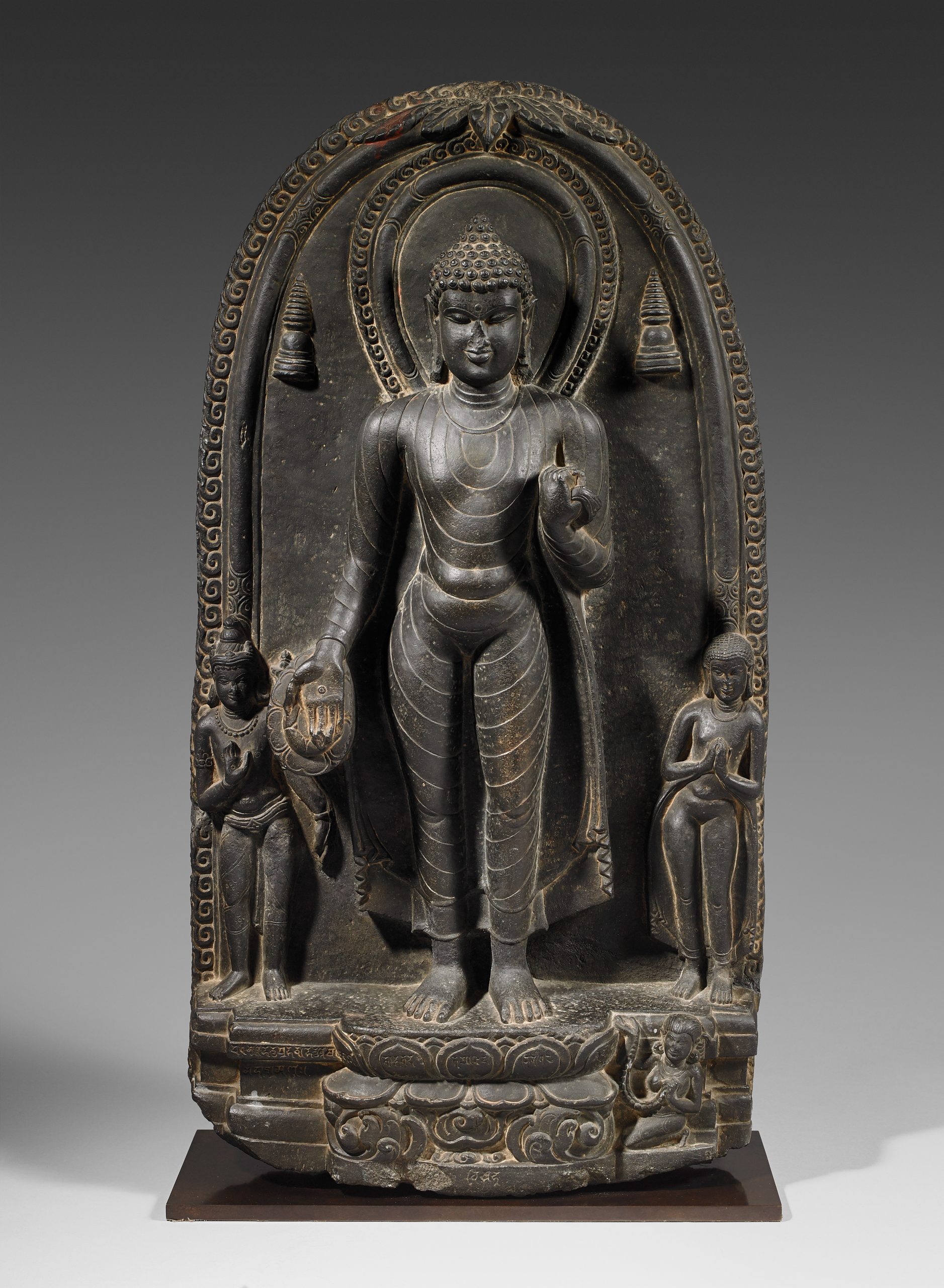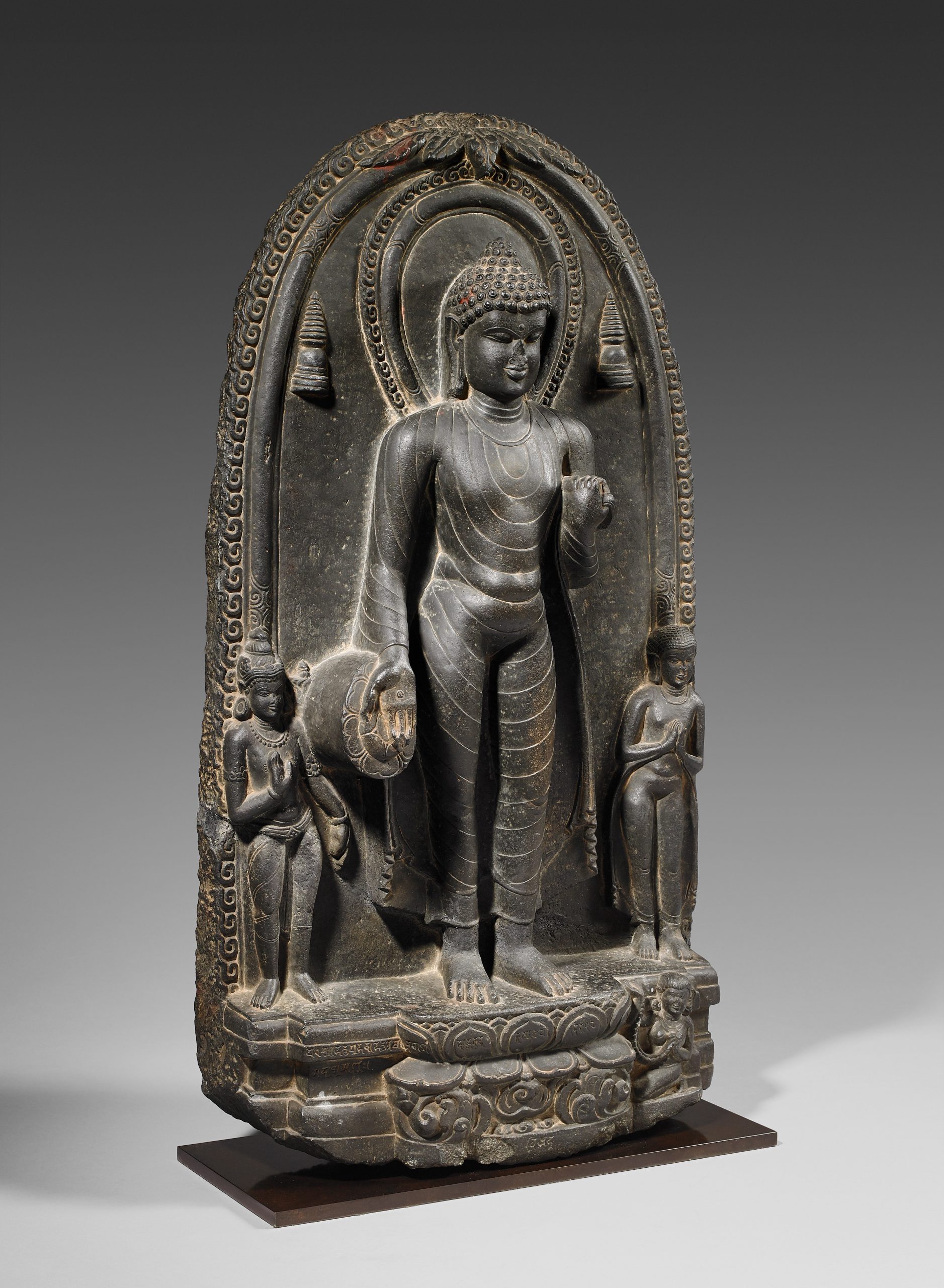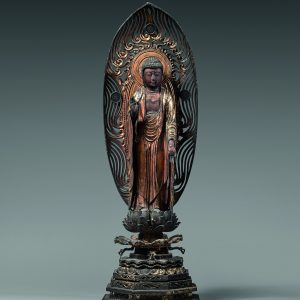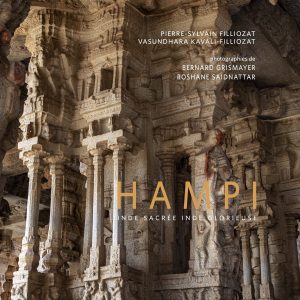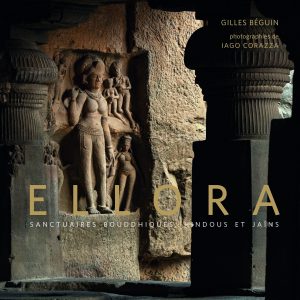Śākyamuni Buddha
Black stone
Northeast India (Bihār, Bengal)
Circa 10th century, Pala dynasty (8th-12th century)
H. 69 cm
Description
The Blissful One, of heroic size, stands in the middle of the stele. With his right hand, he distributes charity (varadamudrā). His left hand, at arm level, clutches a fold of his monk’s robe (saṃghāṭī), also called the “outer cloth” (uttarāsanga). Of the distinctive signs (lakṣaṇa) of a “great man” (mahāpuruṣa), tradition kept only two essential items in its images, both of which are evident here: the fleshy protuberance on the crown of the head (uṣṇīṣa) and the whorl of hair on the lower forehead (ūrṇā). The earlobes distended by the wearing of heavy gold jewelry demonstrate the renouncing of the vanities of his former worldly life. The face is surrounded by a triple halo.
Two attendants accompany him. They are difficult to identify. The one on the left has an elaborate hairdo which means he is royalty. His rich clothing indicate he is not a disciple of Buddha. However, the clothing on the attendant on the right designate him as a monk. Such standing buddhas sometimes allude to the descent of Śākyamuni from the Heaven of the Thirty-Three Gods (Trāyastriṃśa) in Vaiśālī, where he preached to his mother. At this event, the Blissful One was accompanied by the king of the gods, Indra, and by Brahmā. The attendant on the right does not have the three characteristics of this deity and so this double identification can be dismissed. It is more plausible to evoke two other characters linked to this episode who welcomed him at the foot of the magic triple staircase: Ūdāyana, the king of Kauśāmbī, and the nun Upalavarṇā.
It is from this perspective that the two reliquary tumuli (stupas) should perhaps be interpreted. In Pāla iconography, they sometimes indicate a famous sanctuary or place of pilgrimage, here Śāṅkāśya, the place of the miracle of the descent, geographically located much farther west than the sites related to the life of Śākyamuni.
On the base is a small female kneeling, which we could perhaps identify as a donor. She is wearing a serpent, an attribute difficult to explain.
In the lower left of the sculpture, and continuing throughout the lotus petals, runs an inscription that can be transcribed and translated as follows:
Ve dharma hetu prabhayā hetun
Teṣāmtathāgato hyavadat
Teṣām ca yo nirodha
Evam vadi mahāśrama
All phenomena arise from causes.
Those causes have been taught by the Tathāgata
And their cessation too has been proclaimed by the Great Śramana
Stylistically speaking, the stele appears to predate that characterizing Pāla art as of the 11th century. The elongated face, with its full lips and somewhat protruding eyes, is similar to post-Gupta art of the 7th-8th century, and beyond that to classic Indian art of the 5th-6th century. Buddha’s body is subtly animated by a very slight shift of the body and by the discreet movement of the left leg. A mystical wind blows the thin fabric of his clothing against his asexuated body to create a delicate “wet drapery” effect. At the ankles, the undergarment (antaravāsaka) is clearly visible under the uttarāsanga.
Provenance : The work comes from the famous collection of George P. Bickford of Cleveland of the 1960s.

